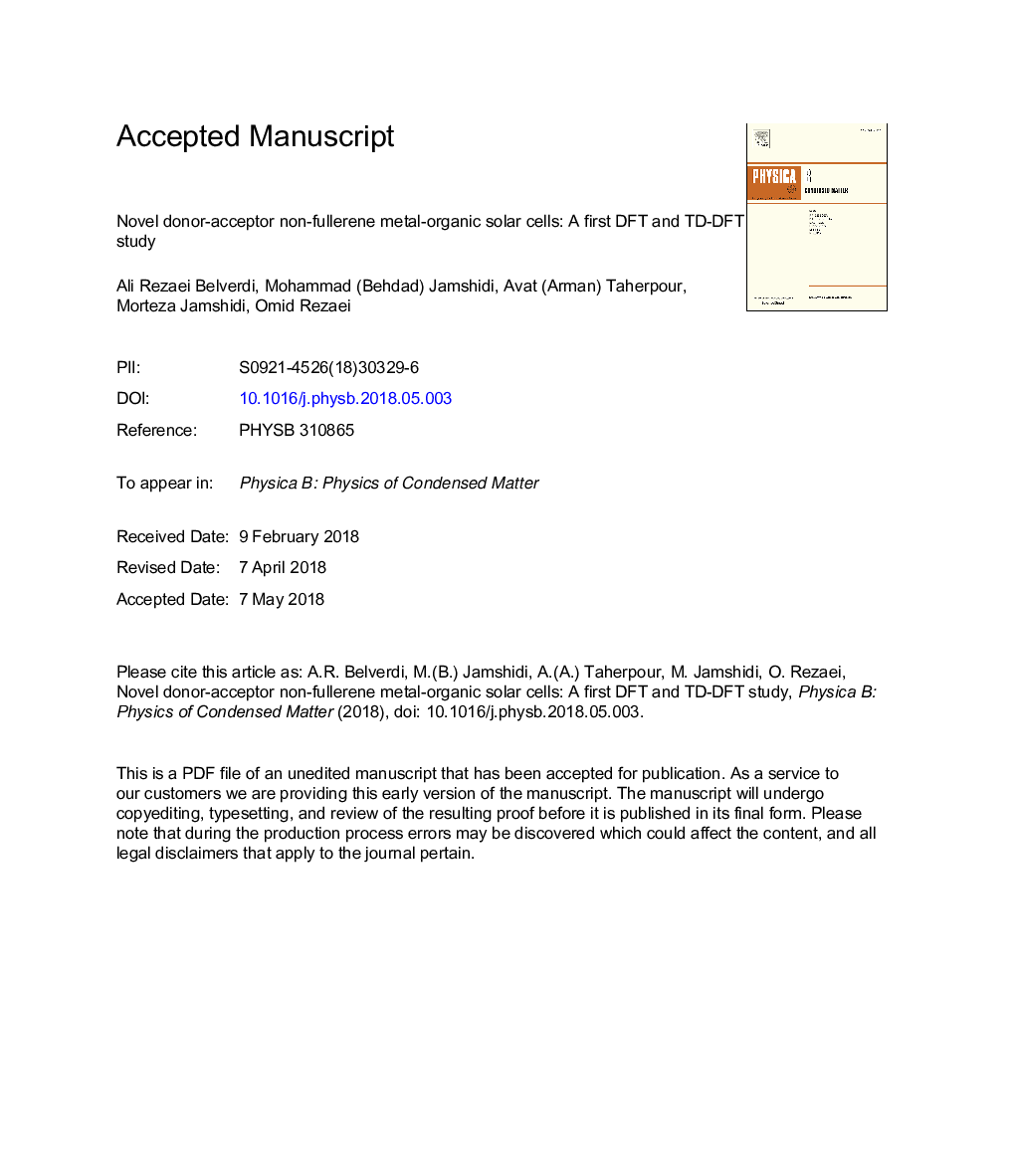| Article ID | Journal | Published Year | Pages | File Type |
|---|---|---|---|---|
| 8160433 | Physica B: Condensed Matter | 2018 | 14 Pages |
Abstract
Recently, a multitude number of studies have paid attention to organic solar cells due to their advantages such as flexibility, long life and low cost. In this research, a Donor-Acceptor (D-A) system using dipyrido[3,2-a:2â²,3â²-c]phenazine (A) as an acceptor and α-sexithiophene (D) as a donor are designed using DFT and TDDFT computational methods. The effect of acceptor complex of Mg, Ca, and Be on the system function is investigated. The complexation of dipyrido[3,2-a:2â²,3â²-c]phenazine with Mg, Ca, and Be has reduced its orbital energy level. In addition, this complexation has a relatively good performance as A for the introduced D-A system. Computations at the ground state by investigating HOMO&LUMO orbital energy and electron density have been done. This indicates the efficiency of acceptor complex of Ca, which has an energy gap of 0.92â¯eV, after optimal function of Mg acceptor. The Charge Transfer (CT) at excited state for different acceptors in D-A system is explained by using electron-hole theory and computations. CT results demonstrates that the best function is related to the Ca-acceptor complex, which has the greatest amount of CT with a length of 17.82â¯Ã
.
Related Topics
Physical Sciences and Engineering
Physics and Astronomy
Condensed Matter Physics
Authors
Ali Rezaei Belverdi, Mohammad (Behdad) Jamshidi, Avat (Arman) Taherpour, Morteza Jamshidi, Omid Rezaei,
